Introduction of No Hot Water in House
Important Point
Dealing with no hot water causes in the house presents several challenges, but there are also solutions available.
There is most common issues finding of the type of water heater have installed.
The problems are generally solved quickly, and they should always be considered.
When pondering why is my hot water not working, there are common problems; each water heating system has its specific issues.
So firstly we shall look at the different systems, and then discuss what could be the problem when we have no hot water.
No Hot Water In House: Common Causes and Fixes
There are most common issues finding of the type of water heater have installed.
The following problems are generally solved quickly, and they should always be considered.
1. Leaking Tank
This problem may require replacing the entire tank if the source of the tank is checked between the appliance and its valves and the pipes.
When checking the leaks, you should be very careful as the water may be hot.
A water heater does its job; it has to be water in the tank.
If it isn’t hot water, it generally means that the tank is leaking.
So, an empty tank is a serious problem and isn’t at all energy efficient.
And check the tank’s compartment.
There is water in the tank’s compartment; it’s most usually time to replace the appliance.
2. Quantity Vs. Demand
Specially, in a busy home is an empty tank is the most common reason for water to remain cold.
The water heaters work to heat the amount of water that fills the tank.
This tank has a limited capacity.
This hot water in a short time will empty the tank’s supply faster than the heating elements can replace it.
Tanks commonly require time is half an hour to build up a sufficient supply once drained.
In the event, this particular problem is constantly passing, when want to consider upgrading to a larger capacity heater.
Water heaters are frequently installed based on an estimate of the demand for the current house.
3. Sediment Buildup
This problem occurs naturally and is frequently accompanied by a reverberating sound if there are many buildups.
The sediment absorbs heat from the water, making it more difficult for the heating elements and shortening their life spans.
We should regularly flush the tank to prevent sediments such as calcium from solidifying, destroying a tank over time.
4. Thermostat
Hot water is produced by a Water heater and is energy effective.
The thermostat slightly adjust may be enough to keep the water hot.
The water getting into the tank’s compartment for any reason must perhaps cause the thermostat to short out.
Between 122 and 140 degrees Fahrenheit must be set for The thermostat
If there is no hot water or the forces not acceptable or is too hot, check the upper thermostat.
If the thermostat is burned, it should be replaced. Lack of regular maintenance can cause issues, indeed though the thermostat is working because of sediment buildup.
5. Electric Water Heaters
For those with electric water heater no hot water issues, electric heaters often face problems like shorts, which are common in electrical appliances.
The most common problems are found in an electric heater.
6. Breakers, Fuse, and Reset Button
A blown a fuse or tripped breaker shall be easily disabled in the heater.
In most cases, resetting the breaker shall be enough.
This issue will require replacing the breaker or fuse with a higher amperage unit.
Such as breaker, a reset button that trips frequently will need replacing.
7. Gas Water Heaters
For those wondering about no hot water gas water heater issues, gas heaters have several distinct parts that differentiate them from electric heaters.
In many cases, problems are related to these components.
It must be handled by the home owner with standard tools.
8. Grounding
Grounded components can list out the heater and damaged parts.
The object should be checked, which causes wires to touch and remove the wires.
If our heating element or thermostat is grounded, we will need to replace that component.
9. Pilot Light Assembly
The pilot light assembly contains the pilot light, thermocouple, and burner.
The potential problems can affect the heater’s performance.
The following are the most common issues:
9.1 Blocked Flue
- The storms may be blocking the flue.
- The air forced down can extinguish the pilot.
- It should be cleaning the flue can be messy.
- It is a straightforward task.
9.2 Clogged Burner
- Residue can slowly build up on the burner over time and develop clog.
- This can prevent the burner from functioning.
- It should be regularly removing and cleaning this element will help to maintain the heater’s effectiveness.
9.3 Clogged Pilot
- The opening which produced the pilot light may be clogged like a burner.
- It should be regular cleaning will help improve performance.
9.4 Thermocouple
- These elements should be in the pilot light’s flame.
- The connection must be secure to the gas line.
- It should be checked for kinks and replaced the component.
Also, Read: What Is Bridge Abutment | 5 Types of Abutments
10. Supply Line
There are many problems that may affect the supply of gas going to the heater.
It should be checked the supply such as no pinhole leaks or other damage.
A supply line (damaged line) should be replaced immediately to prevent the risk of fire or explosions.
11. Sorts
A sort in the wiring may prevent not only a fire hazard but also the heater from properly functioning.
It should be checked every wire for signs of damage and replaced as needed.
- Monolithic Definition | Monolithic Footing | Monolithic Slab Foundation | Advantages & Disadvantages of Monolithic Slab Foundation | Monolithic Slab
- What is Floating Foundation | Suitability of the Floating Foundation | Advantages & Disadvantage of Floating Foundation | How to Build a Floating House Foundation
- What Are Construction Cost Estimates | Types of Construction Cost Estimates | Purpose of Preparing a Cost Estimate
- What Are Columns | Types of Rcc Column | Round Column Vs Square Column | Pillar Vs Column
- Top Water Tank Brands in India
Why Do I Have No Hot Water?
If you’re thinking, why is there no hot water in my house, it’s because of the following issues occurring in my home.
If I uses water heater in a tank, many problems find it. Following are the issues found in my home.
1. Leaking Tank
A water heater does its job; it has to be water in the tank.
If it isn’t hot water, it generally means that the tank is leaking. So, an empty tank is a serious problem and isn’t at all energy efficient.
Connections are checked between the appliance and its valves as well as the pipes.
And check the tank’s compartment.
There is water in the tank’s compartment; it’s most usually time to replace the appliance.
Also, Read: Bolt Vs Screw | What Is Bolt | What Is Screws
2. Gas Leak
acing a lack of hot water due to a natural gas leak from my water heater is both inconvenient and hazardous.
If I suspect that gas is leaking, call my gas company as soon as possible.
The professional gas company’s technician focus is not to repair hot water heater.
It is affected by his assessment of the appliance.
The gas company will work on results. If there is a natural gas leak, If there is no gas leak, my troubleshooting journey continues.
3. Electric Water Heater Malfunction
When considering reasons for no hot water, and focusing on my water heater, energy efficiency is crucial.
Gas water also an electric heater can both be effective at making sure not dangerous, no hot water in the house.
The electric interpretation relies on electricity.
If my home has no hot water, firstly turn off the heater.
Also, reset the circuit breaker.
However, my home will receive hot water again after about an hour; if the breaker tripped, A circuit breaker’s continuous trip is a bad sign, so hit the reset button.
There is still an issue; I suggest a well-qualified electrician.
4. Failing Gas Valve
This has a gas water heater and has no hot water should check the appliance’s supply line.
It may be secure and in the correct place.
Take a look at the gas valve; there are no leaks.
Also, double-check that the gas is on.
The gas valve is good or not, inspect the pilot light.
I need to re-light the pilot several times.
It must stay lit.
Due to impeding the gas supply, the gas line could be the culprit.
So, it is Time to invest in an energy-efficient new water heater.
5. Malfunctioning Thermostat
The hot water is produced by a Water heater and is energy effective.
Between 122 and 140 degrees Fahrenheit, The thermostat must be set.
If in-house is no hot water or the forces not acceptable or is too hot, check the upper thermostat.
If the thermostat is burned, it should be replaced.
Lack of regular maintenance can cause issues, indeed though the thermostat is working because of sediment buildup.
To fix this, flush my water heater.
6. The Weather
The outside temperature determines how readily water can be heated.
If I stay in an area that experiences cold temperatures, this can impact my system and cause water problems.
I may need to ride out the cold and then isolate the appliance.
7. Tank Size
If my tank is small, my household isn’t going to be energy effective and is going to run out of hot water faster.
Perhaps the appliance did its job when it was just my spouse and me.
As my family grew, still, so made the demand for hot water and lot further hot showers. It is time for a larger hot water tank.
The electric water heaters take longer than gas water heaters to heat.
8. Recommended Tools and Materials
This should be energy effective in the home; I want to replace or repair the home’s water heater by myself.
They always suggest allowing a well-qualified electrician to take care of the job.
Still, if I enjoy attempting a DIY project and have some experience, I’ll need such tools as , Screwdriver ,Wrench
9. Electrical and Plumbers Tape
- Safety glasses
- Soldering torch
- Tube cutter
Conclusion
Facing no hot water in house but have cold water gas or no hot water in house but have cold water electric situations presents many causes and solutions.
Each type of water heating system also has its specific kinds of problems.
So firstly we shall look at the different systems, and then discuss what could be the problem when we have no hot water.
No Hot Water in the House
If there is no hot water or the supply is not adequate or is too hot, check the upper thermostat. If the thermostat is busted, it should be replaced. Lack of regular maintenance can cause issues even though the thermostat is working because of sediment buildup. To fix this, flush your water heater.
No Hot Water in House but Have Cold Water
If there is no hot water or the supply is not adequate or is too hot, check the upper thermostat. If the thermostat is busted, it should be replaced. Lack of regular maintenance can cause issues even though the thermostat is working because of sediment buildup. To fix this, flush your water heater.
No Cold Water in House
If no cold water is a widespread issue throughout the home, it’s possible a shutoff valve in the main water supply line may have been turned off accidentally. If that’s the case, you can simply turn the valve back on and get back to showers as normal.
Hot Water Not Working in House
If you have good water flow (“pressure”) at hot water faucets, but it’s cold, then the water supply piping is not blocked and the problem is in the water heater itself, or in a mixing valve.
No Hot Water in House Gas Water Heater
No hot water — gas water heater. If a gas water heater isn’t heating, a common problem is usually that the pilot light has gone out. This may be caused by the gas valve, the natural gas supply, or—more likely—the thermocouple located next to the pilot light.
No Hot Water in House Gas
This could be because the gas line has air in itand needs to be purged. Or the gas supply valve is turned off. It should be in a parallel position with the gas pipe. Sometimes, the thermocouple could be defective, which is easy to replace yourself if you have any mechanical ability.
I Have No Hot Water in My House
If there is no hot water or the supply is not adequate or is too hot, check the upper thermostat. If the thermostat is busted, it should be replaced. Lack of regular maintenance can cause issues even though the thermostat is working because of sediment buildup. To fix this, flush your water heater.
Apartment No Hot Water
If you have no hot water, the problem is usually in the heater. … These work by heating the water until it reaches a certain temperature and then the water is stored and kept at that temperature until the hot knob is turned. There are two types of storage heaters, gas, and electric heaters.
Water Not Hot in House
1. bump up the thermostat. Ideal operating temperatures for hot water heaters are between 122 and 140 degrees Fahrenheit.
2. Check the forecast.
3. Relight the pilot light.
4. Fix a faulty thermocouple.
5. Rekindle a blue flame.
6. Inspect the gas line.
7. Restart your water heater.
8. Reset the circuit breaker.
No Hot Water in My House
Like this post? Share it with your friends!
Suggested Read –
- What Is Construction Contract | Types of Engineering Contracts | Percentage-Rate Contract
- Concrete Mix Ratio | What Is Concrete Mix Ratio | Types of Concrete Mix Ratio
- What Is Plumbing | Systems of Plumbing | Difference Between One pipe, Two Pipe, Single Stack, and Single Stack Partially Ventilated | How to Choose of Plumbing System.
- What Is Pitched Roof | 8 Types of Pitched Roof | Advantages of Pitched Roof
- What Is the AASHTO Classification System | AASHTO Classification System Procedures
- What Is Rock Cycle | Types of Rocks | Processes in Rock Cycle | What Are the Steps of Rock Cycle | Uses of Rocks in Construction
Originally posted 2021-10-01 11:37:15.
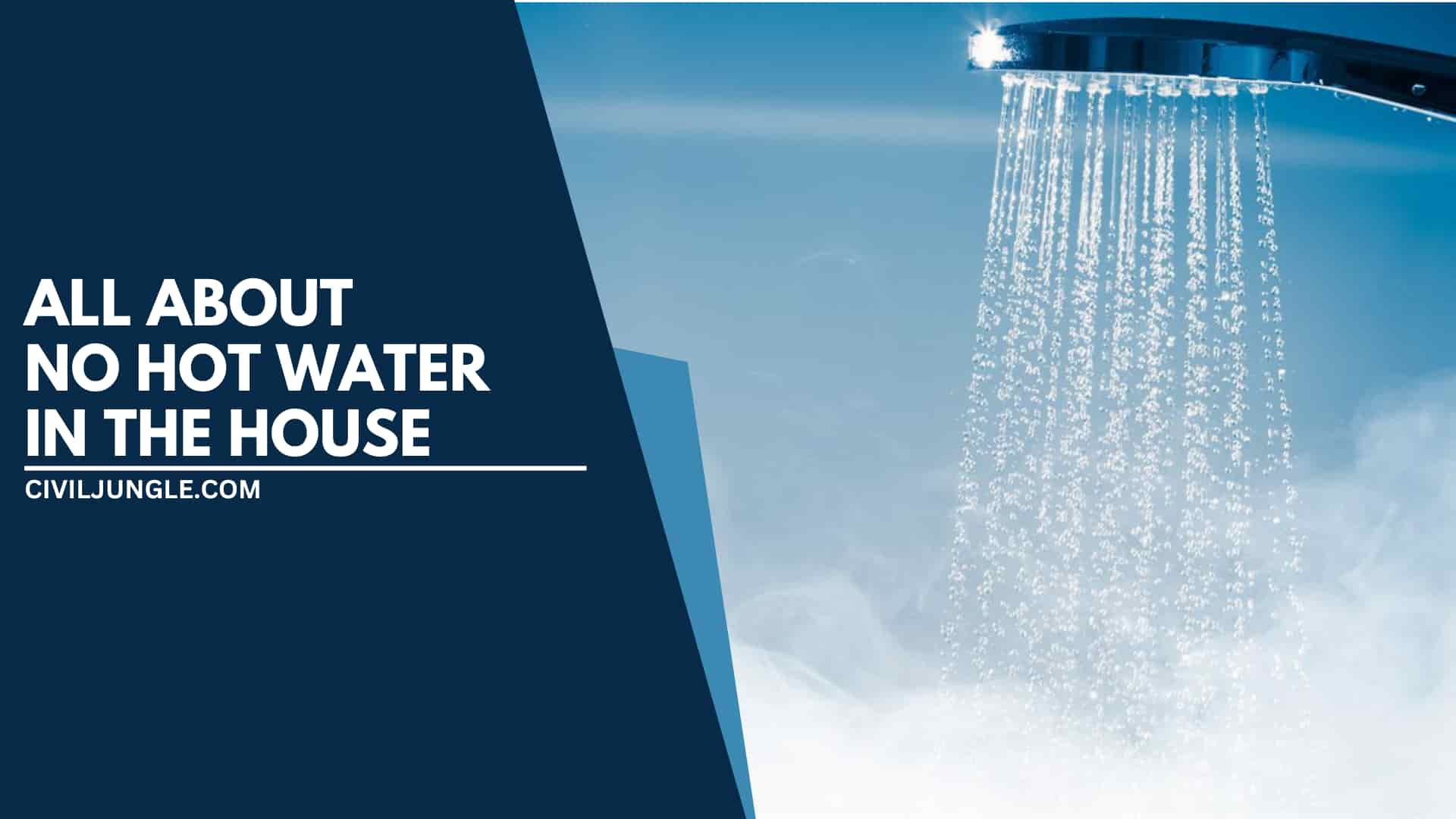
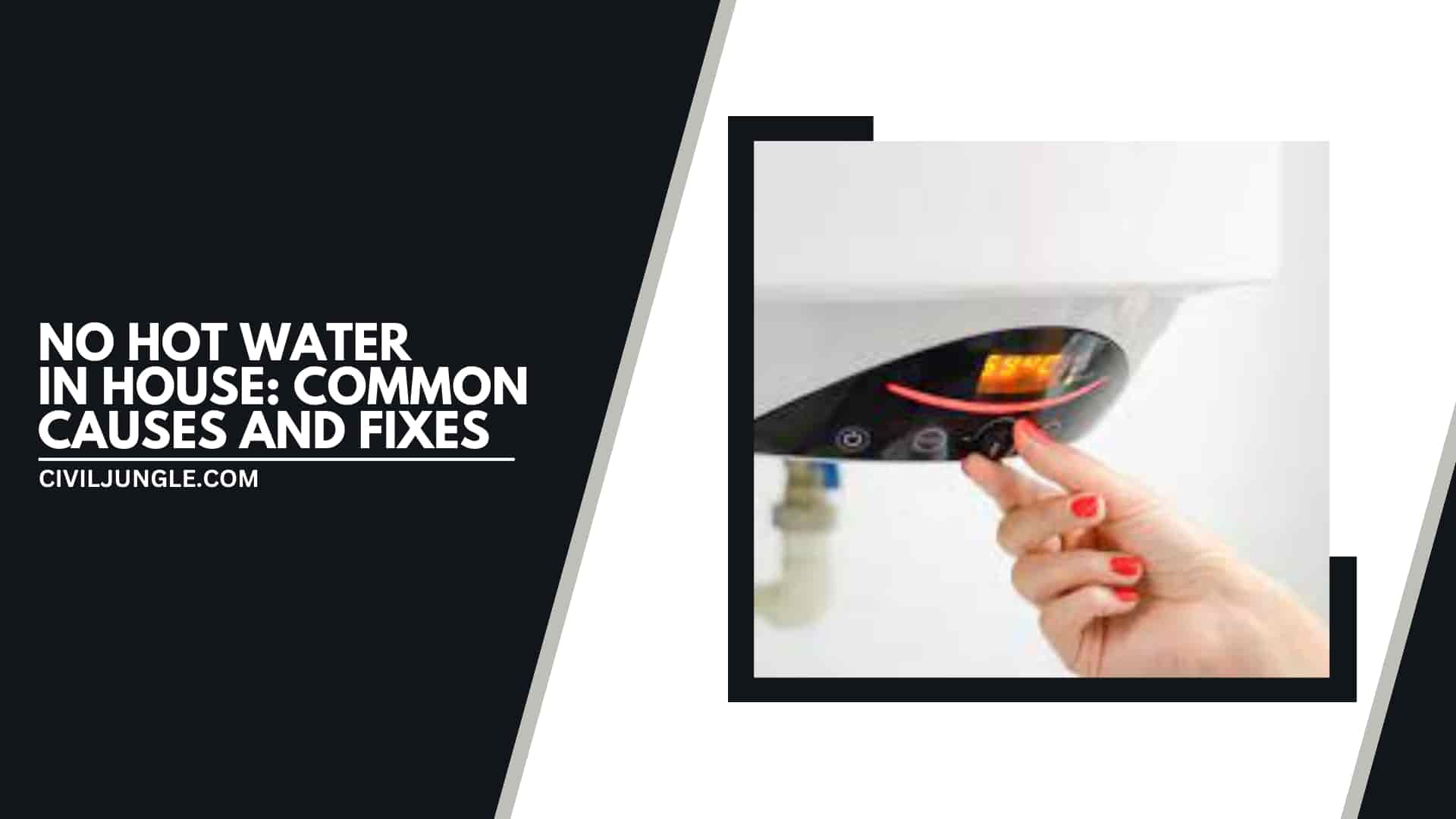
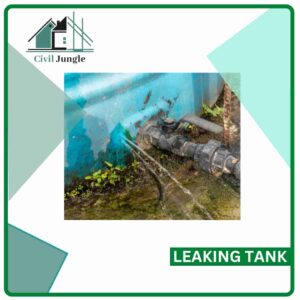
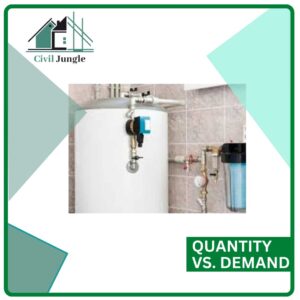
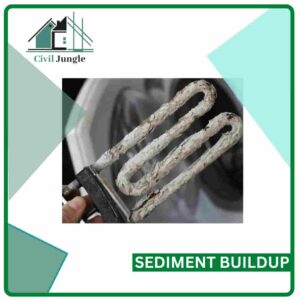

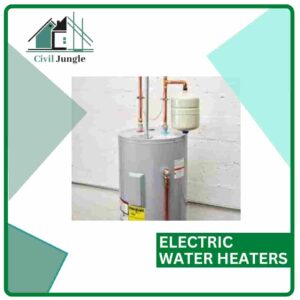
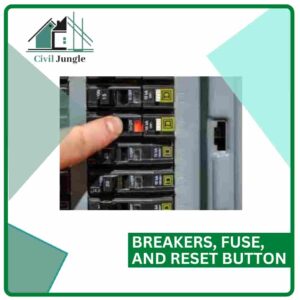
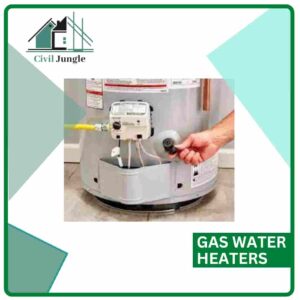
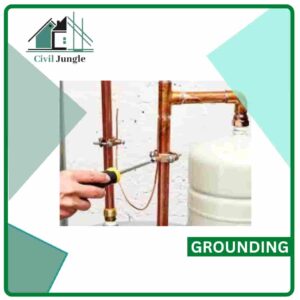
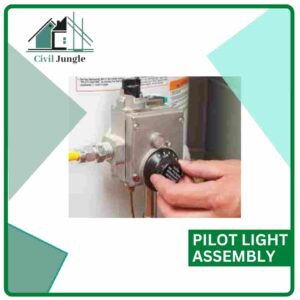
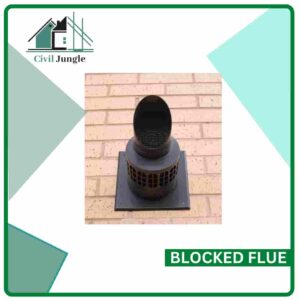
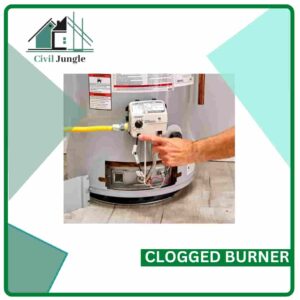

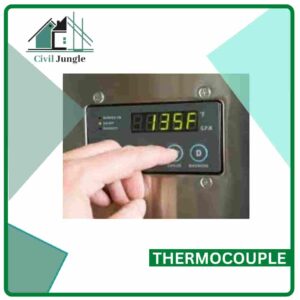
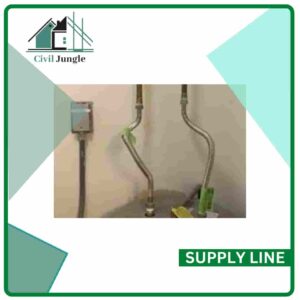
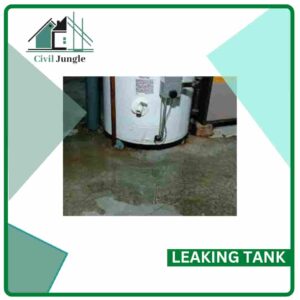
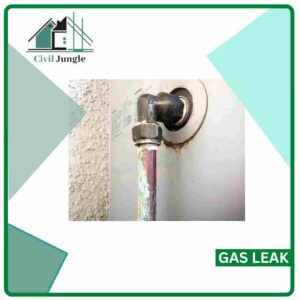
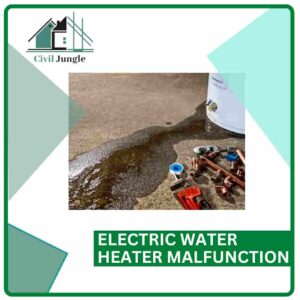
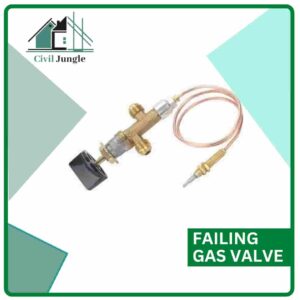

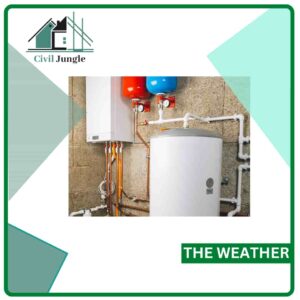
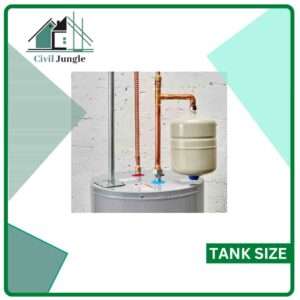
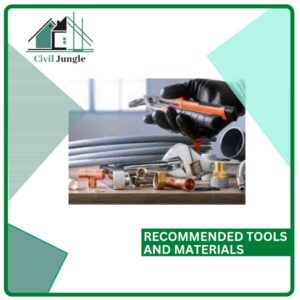
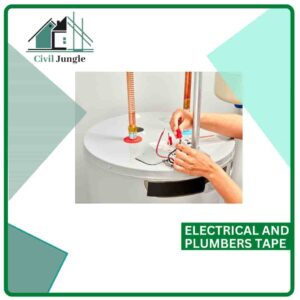

Leave a Reply